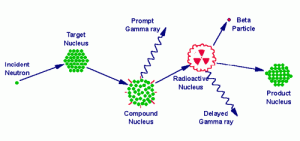One of the main reasons the general public is confused about archaeology is the fact that they do not understand modern technology’s role in studying the past. The classic image of an archaeologist is of someone in the field, digging with a shovel or trowel. People picture a very isolated dig site without any sort of modern equipment and cannot understand why professional archaeologists need training for such straightforward work. Because the act of digging seems so physical and basic, people assume that archaeology is not a science but guesswork. They do not know that today, there are many advanced scientific ways to gather data about an artifact or ecofact.
This past week, we looked at flakes of obsidian in class. When asked to speculate on what tools these flakes were, some people suggested that they were knives because of the way the stones fit into the palms of their hands. However, it is dangerous to try and determine utility from something that varies as much as hand size does. People have even mistaken ordinary stones for artifacts using this method. Professor Beisaw instead suggested that one could determine usage by looking at the flakes under a microscope. If the edge of a flake had been worn down, one would know it was used to cut something. From there, one might be able to hypothesize more specifically about how it was used. On the other hand, maybe the microscope would reveal that it was simply an abandoned remnant of a larger piece of stone that had been made into an arrowhead.
Professor Beisaw also explained that a gun-like instrument that could determine a stone’s chemical makeup had been developed. This technology helps identify whether a tool was made from local materials or materials from further away by scanning nearby natural resources. If none of the natural resources match the tool, it not only reveals more information about the tool itself but also suggest that trade once occurred within the region. In this way, using technology to analyze artifacts helps determine the exchange systems of ancient cultures.
Wendy Ashmore mentions a similar type of technology in Discovering Our Past. On pages 200-201, she describes X-ray fluorescence (XRF) and neutron activation analysis (NAA) as analytical methods that determine the physical and chemical makeup of artifacts. X-ray fluorescence works by releasing photons due through radiation that correspond to particular elements. (http://serc.carleton.edu/research_education/geochemsheets/techniques/XRF.html) Neutron activation analysis involves targeting nuclei with neutrons, producing a specific gamma ray reaction. (http://archaeometry.missouri.edu/naa_overview.html)
These technologies only scratch the surface when it comes to the methods used to study archaeological sites. In addition to collecting artifacts of interest, archaeologists use both their knowledge of historical context and scientific instruments to paint a more complete picture of past civilizations.


